Dragon fruit, or pitaya, is one of the most visually stunning and delicious fruits you can grow at home. With its vibrant colors, sweet taste, and unique cactus-like stems, dragon fruit is a popular choice for home gardeners around the world. One of its best qualities? It’s surprisingly easy to propagate!
Whether you’re a beginner gardener or an experienced grower, learning how to propagate dragon fruit is essential for expanding your garden, sharing with friends, or even starting a small fruit farm. In this guide, you’ll discover everything you need to know about dragon fruit propagation, including methods, tools, tips, and troubleshooting strategies.
What Is Propagation?
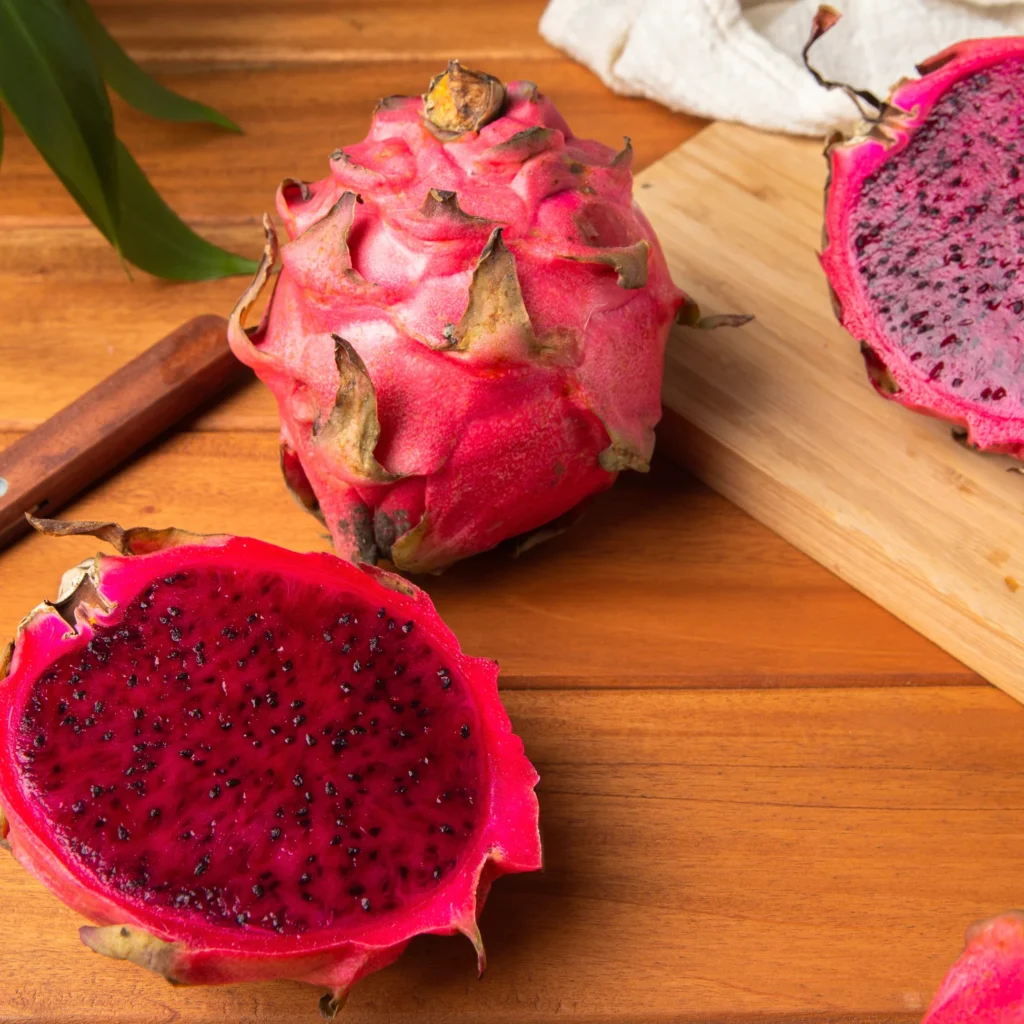
Propagation is the process of creating new plants from existing ones. With dragon fruit, you can do this in two main ways:
- Stem Cuttings (vegetative propagation)
- Seeds (sexual propagation)
Both methods can work, but each comes with its pros and cons. Let’s explore both in depth.
Method 1: Propagating Dragon Fruit from Cuttings
This is the easiest and most popular method. Propagating from cuttings guarantees faster growth and earlier fruiting because you’re using a mature piece of an existing plant.
Advantages:
- Faster growth and fruiting (1–2 years)
- Clones the parent plant (same variety and fruit quality)
- Easier and more reliable than seeds
How to Take and Plant Cuttings
Step 1: Select a Healthy Parent Plant
Choose a mature dragon fruit plant that’s disease-free, with thick, healthy stems.
Step 2: Take the Cutting
- Use a clean, sharp knife or pruner.
- Cut a 12–18 inch segment from a healthy stem.
- Make a clean cut at a 45-degree angle to increase rooting surface.
Step 3: Let It Callous
- Place the cutting in a dry, shaded area for 3–7 days.
- This allows the wound to callous over and prevents rot.
Step 4: Prepare the Soil and Pot
- Use well-draining cactus mix or a combination of sand + compost + perlite.
- Choose a pot at least 8–10 inches deep with drainage holes.
Step 5: Plant the Cutting
- Insert the calloused end 2–3 inches into the soil.
- Place the pot in a warm, bright location with indirect sunlight.
- Water lightly after planting, then sparingly until roots develop.
Step 6: Support and Train
- As the cutting grows, provide a stake or trellis for vertical support.
- Begin fertilizing 1 month after planting using a balanced fertilizer.
Rooting takes about 2–4 weeks, and new growth appears soon after.
Method 2: Propagating Dragon Fruit from Seeds

While propagation from seed is possible, it’s slower and less predictable. This method is great for experimentation or developing new hybrids.
Advantages:
- Cheap and fun for hobbyists
- Allows you to grow many plants at once
- Can yield unique varieties (though unpredictable)
Disadvantages:
- Slower growth (2–5 years to fruit)
- Seedlings may differ from parent plant
- Requires more patience and care
How to Grow Dragon Fruit from Seeds
Step 1: Collect Seeds
- Scoop seeds from a ripe dragon fruit.
- Rinse thoroughly to remove pulp.
Step 2: Dry and Prepare
- Allow seeds to air-dry for 24 hours.
- Prepare a seed-starting tray with well-draining soil.
Step 3: Plant the Seeds
- Sprinkle seeds on top of the moist soil.
- Cover lightly with a thin layer of sand or soil (1/8 inch).
- Mist lightly to keep the topsoil moist.
Step 4: Provide Warmth and Light
- Cover the tray with plastic wrap or a humidity dome.
- Keep in a warm area (75–85°F / 24–29°C).
- Seeds usually germinate within 1–2 weeks.
Step 5: Transplant Seedlings
- Once seedlings are 2–3 inches tall, transplant them to individual pots.
- Continue providing warmth, sunlight, and light fertilizer monthly.
Seed-grown plants may surprise you with unexpected traits—colors, flavor, or shape.
Propagation Materials Checklist
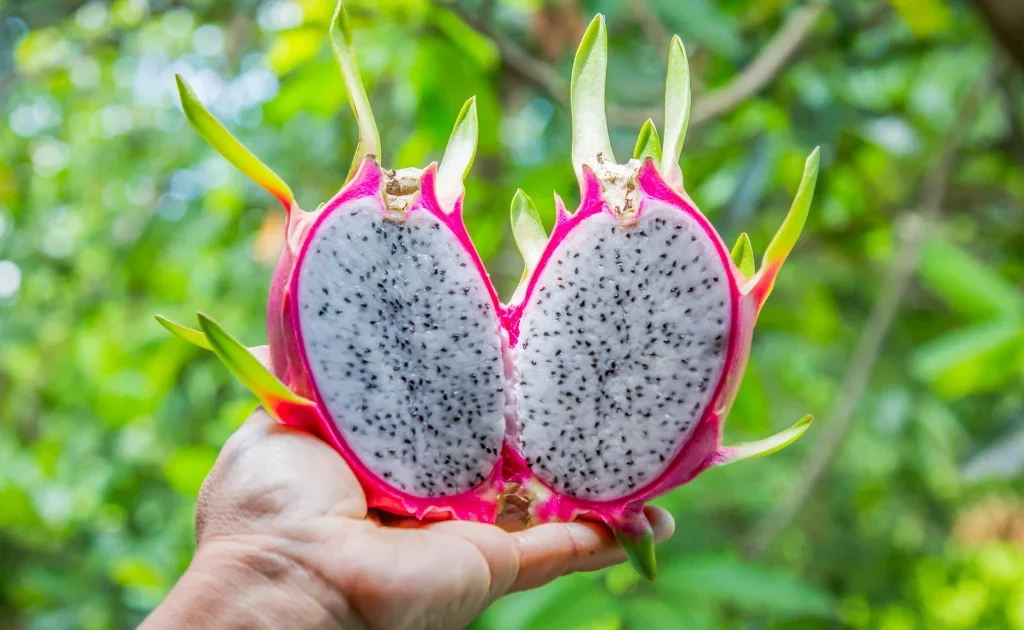
Here’s what you’ll need before you begin:
- Healthy parent dragon fruit plant
- Sharp knife or pruning shears
- Cactus or succulent soil mix
- Pots with drainage holes
- Rooting hormone (optional)
- Gloves (cactus stems have small thorns)
- Trellis or vertical support
- Grow lights (if indoors)
Optional: Use Rooting Hormone
Using a rooting hormone on the cut end can encourage faster and stronger root development.
- Dip the calloused end of the cutting into powder or gel rooting hormone before planting.
- Especially helpful in cooler climates or low-humidity environments.
When to Propagate Dragon Fruit
The best time to propagate is during the plant’s active growing season—spring to early summer.
- Avoid winter, as cold temperatures slow root formation.
- If indoors, propagation can occur year-round with proper warmth and lighting.
Common Propagation Problems and Solutions
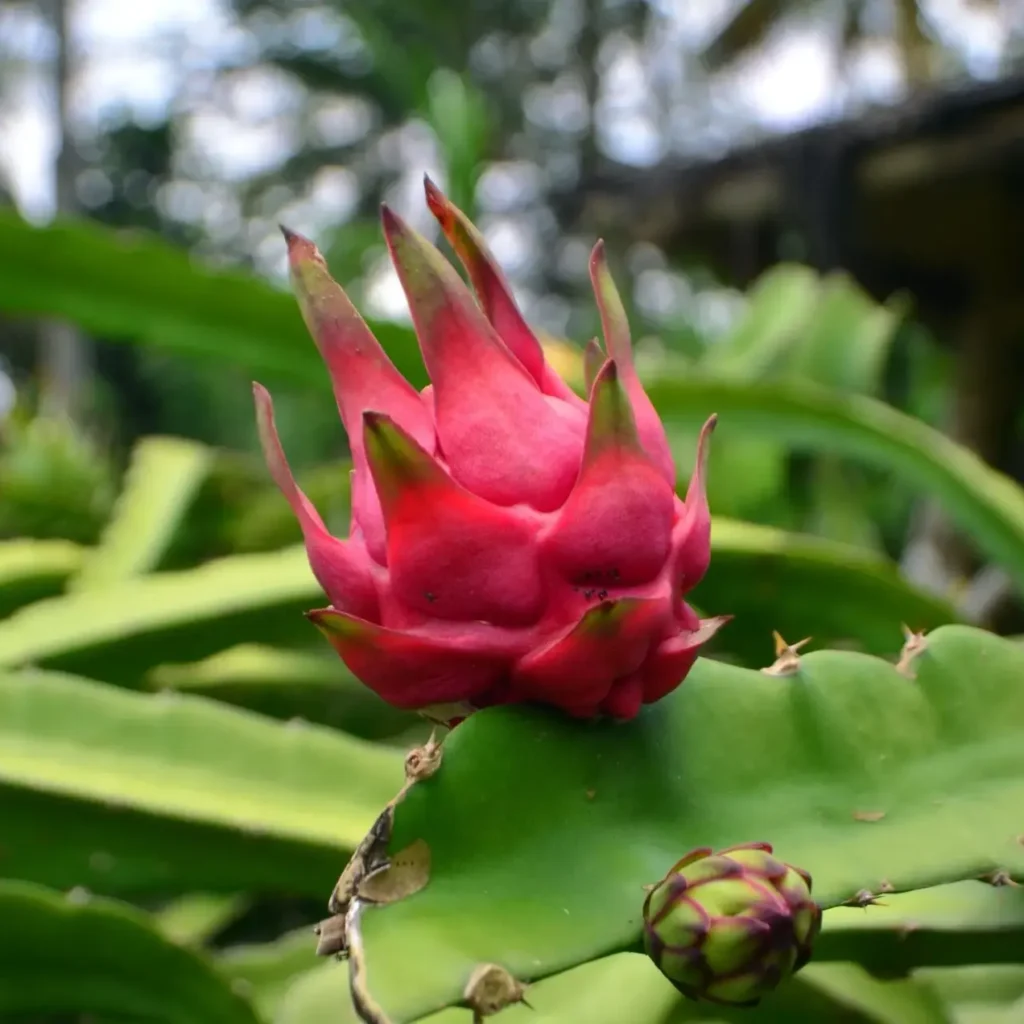
| Problem | Cause | Solution |
|---|---|---|
| Cutting rots | Planted before callousing or overwatering | Allow callous formation; reduce watering |
| No roots forming | Poor light or cold temperature | Move to brighter, warmer location |
| Wilting stem | Too much water or fungal infection | Improve drainage; treat with fungicide |
| Seedlings dying | Overwatering or fungal damping-off | Use sterile soil, water carefully |
Observation is key. Monitor daily for moisture and mold.
How Long Until Fruit Appears?
| Method | Time to First Fruit |
|---|---|
| Cuttings | 1 to 2 years |
| Seeds | 3 to 5 years |
Fruiting also depends on:
- Light exposure (6–8 hours/day)
- Proper support and training
- Regular fertilization
- Pollination (hand-pollination indoors may be necessary)
Tips for Successful Propagation
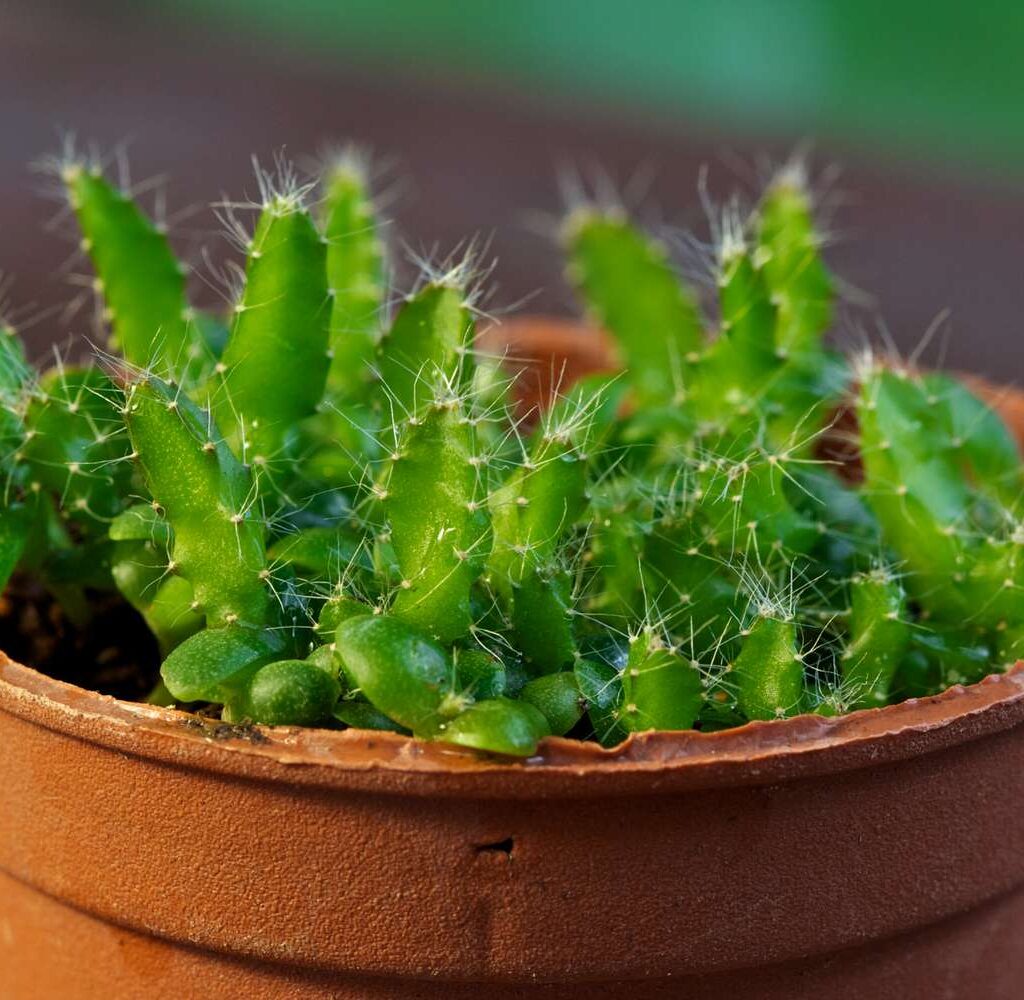
- Use mature cuttings: Younger stems root slower.
- Avoid overwatering: Dragon fruit is a cactus and hates wet feet.
- Be patient: New growth may take a few weeks.
- Start multiple cuttings: Boost your success rate.
- Label your cuttings: Especially useful if propagating multiple varieties.
Bonus: Can You Regrow from a Single Fruit?
Absolutely! You can grow multiple plants from the seeds of one fruit and even use stem cuttings from mature branches later on. Dragon fruit propagation offers endless opportunities to expand your garden with minimal cost and maximum reward.
Final Thoughts
Dragon fruit propagation is not only easy but also incredibly satisfying. Whether you’re growing from cuttings for fast results or from seeds for diversity and experimentation, you’ll love the journey of watching this exotic cactus thrive under your care.
With patience, proper techniques, and consistent care, you’ll soon enjoy not only stunning cactus plants but also your own homegrown dragon fruit harvest.
So grab your pruners or a ripe fruit, and start propagating—your dragon fruit garden awaits!
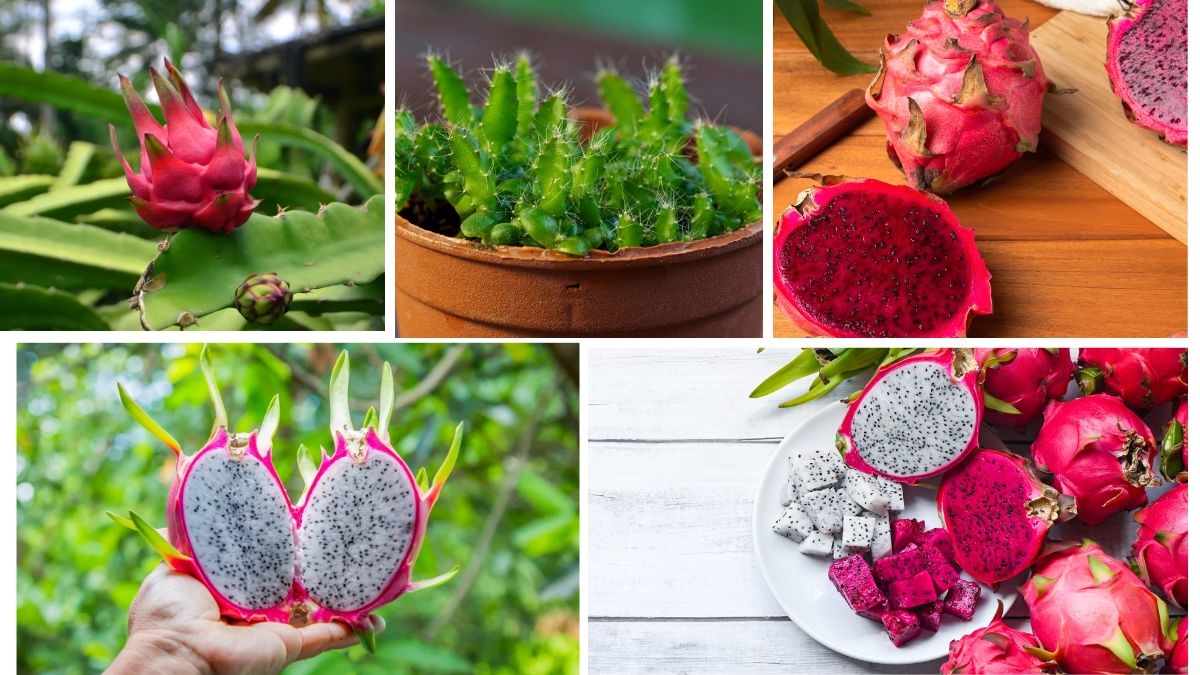




Leave A Comment